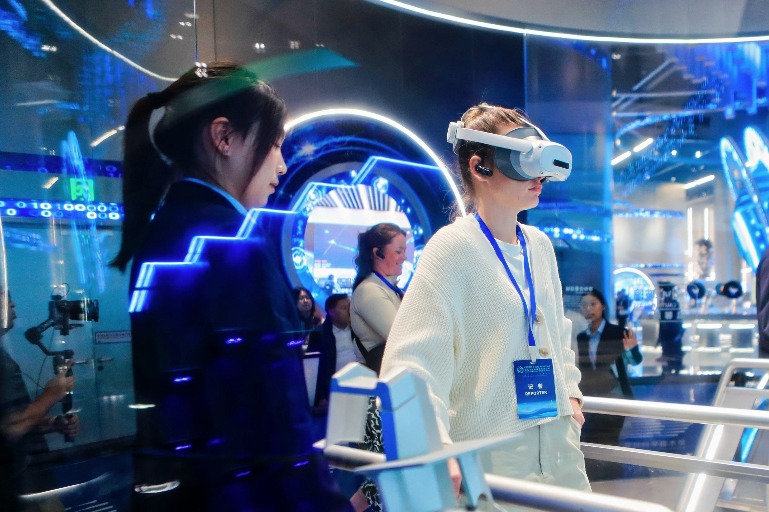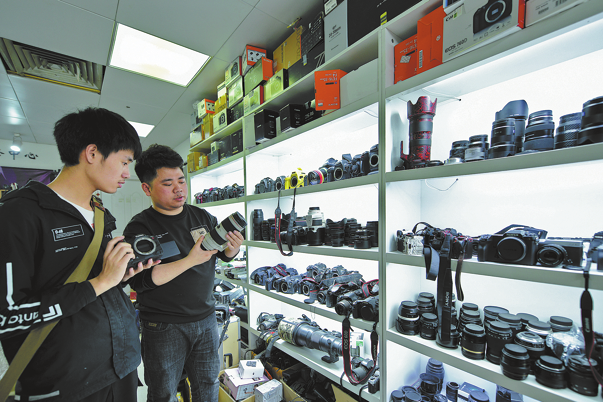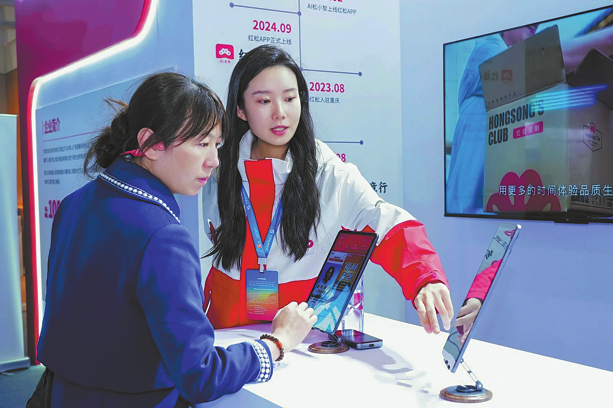Impulsive creativity brings body of work to urban life
Artist Zhang Jiangzhou pushes frontiers of ink at new Beijing exhibition, Lin Qi reports.

Ink artist Zhang Jiangzhou shows up himself in the largest, most enthralling work at his ongoing solo exhibition in Beijing. In the short video work, titled As Ink, he seeks to present the conflicts, interactions and integration of human bodily expressions as manifested in painting and dancing.
In the video, while Zhang painstakingly layers shades onto a large piece of paper on the ground, beads of sweat accumulating on his face, Yu Jinying, a contemporary dancer, performs on the same paper, his whole body covered in ink; sometimes Zhang becomes so lost in the world of ink that he moves his brush away from the paper and onto Yu's body.
In between their performances, there is footage of busy urbanites walking and rushing through the city streets. There is a contrast between the metropolis hustle and bustle and the two artists keeping themselves indulged in their own creations.
Zhang says in the chemistry arising from his and Yu's bodily movements lies the key to the truth of life.
Zhang's concerns with people's individual experiences and state of mind have kept driving him to push forward the frontier of ink painting, which is being demonstrated at his exhibition, Ink Whispers, running through to Sunday at the gallery of the art portal, Calligraphy and Painting Channel, inside the Beijing Olympic Forest Park.
Zhang has made a name in ink art circles for his realistic approach to depicting people at the grassroots and their heroic deeds and other grand, historical themes. Meanwhile he has invested much zeal in profiling the mentality of city dwellers since the late 1990s. The ongoing show presents his latest attempt to engage the audience in "the discussion of the destiny of men as the final question of art", according to the exhibition's curator Wei Xiangqi.
For instance, Zhang has brought to the show the Virtual Life series in which he juxtaposes real people and robots in such a way that viewers "will find it difficult to distinguish one from another", says Wei. The series "shows the fruits of modern civilization cultivated by technological progress and meanwhile, the complicated feelings and worries when recent technological developments have cast a shadow over the future of human society".
Since 2022 Zhang has created a series of paintings to glimpse into the life attitudes of urban youths. In those paintings, also shown at the exhibition, he has used a lot of red and varying hues of pink and purple, and depicted, in an exaggerated manner, elongated human bodies so that they seem to float in midair.
"Red is associated with the primitive pulse of life. It symbolizes power and hope," Zhang says.
It shows that youths are indulged in the colorful metropolitan life and the pleasures of consumption culture, and on the other hand, they are lost under huge pressure from workplaces and living costs.
Zhang thereby directs people toward the situations of the young community, how they cope with career and life anxieties and how they have tried to heal themselves, "so that one day, they will restart again and run even faster", Zhang says.
Wei says in his style of producing ink landscapes of city scenes, Zhang reduces figurative details. "He doesn't seek to present certain people, but grounded in his experiences and observations, he has sought to profile their state of mind," he says.
He says Zhang's work shows a process of understanding and freeing oneself, and he has invited viewers to go through that process to gain a self-composed attitude.
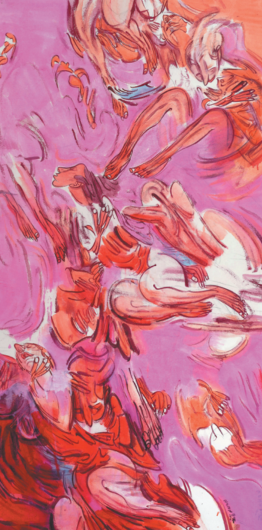
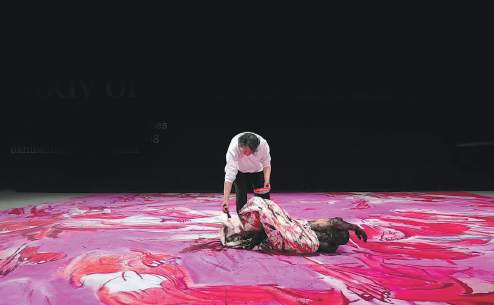

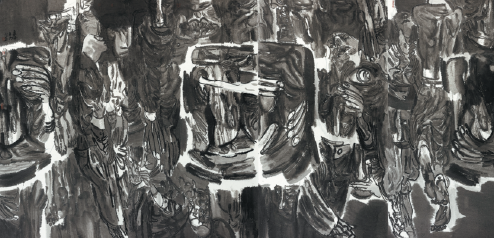
Today's Top News
- Xi congratulates 50th founding anniversary of Lao People's Democratic Republic
- Enhancing old-age finance prioritized
- French president to pay three-day state visit
- Tobacco control measures shouldn't go up in smoke
- Strategy defines growth trajectory
- Opportunity to reconnect Europe with China
















